
As reported by the Houses & Holes earlier, the Australian Bureau of Statistics (ABS) has released labour force data for the month of August, which reported a slight reduction in the headline unemployment rate to 5.1% from 5.2% in July, but a decrease in the total number of jobs across the economy.
The economy shedded 8,800 jobs (-0.1%) over the month , with the loss of 9,300 part-time jobs partly offset by a 600 increase in full-time jobs. Last month’s result was also revised down, from a gain of 14,000 jobs to 11,700 jobs.
The labour force participation rate fell, down -0.2% to 65.0%, which explains the reduction in the headline unemployment rate in the face of job losses (see below charts).
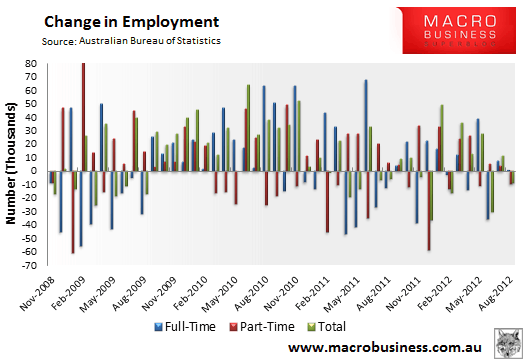
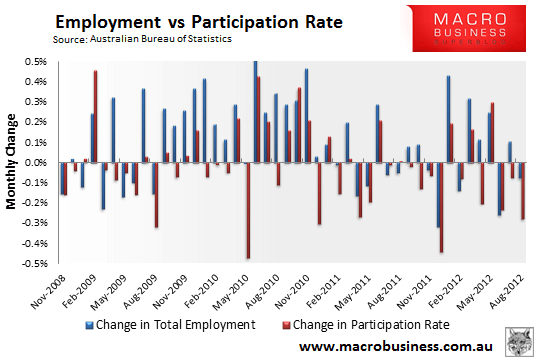
The employment market continues to track sideways, which is a reasonable result given the state of the global economy (see below chart).
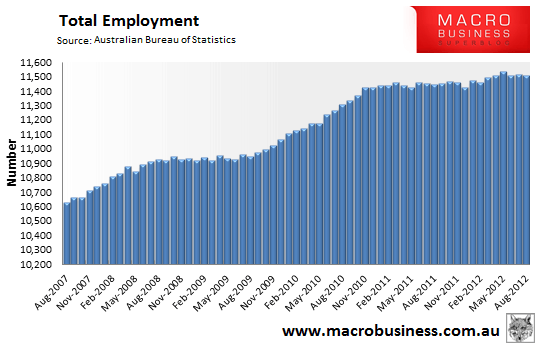
Nevertheless, there are some significant ‘flies in the ointment’ in this release, which contradict the rosy headline result.
Importantly, employment growth outside of Western Australia has been poor, with minimal jobs growth achieved over the past year. In fact, Western Australia has added 88% of the nation’s jobs over the past year – a highly unbalanced result (see below chart).
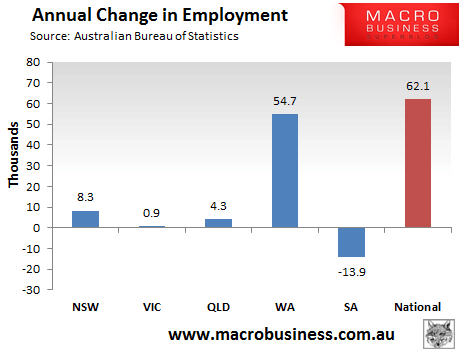
Moreover, the aggregate number of hours worked has fallen in every mainland state except Western Australia (see below chart).
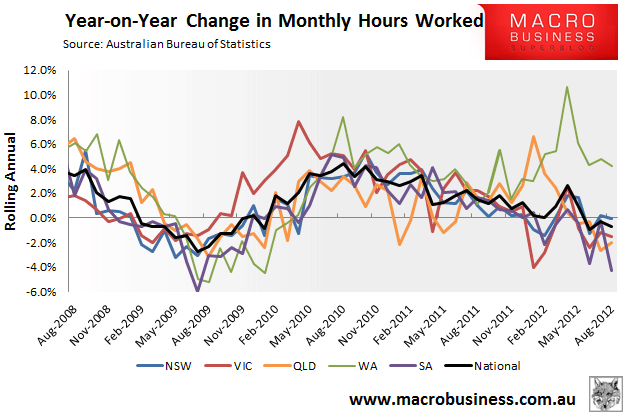
Reflecting the above, Western Australia’s unemployment rate is well below the national average, with New South Wales also holding-up well (see below chart).
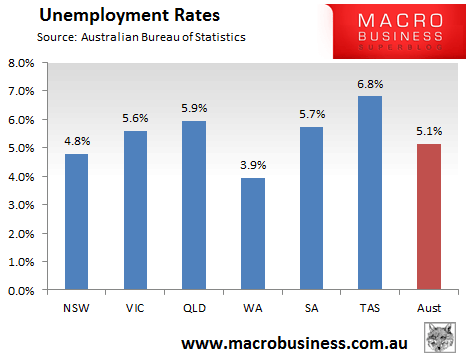
Nationally, the aggregate number of hours worked continued its recent downtrend, falling -0.4% in August:
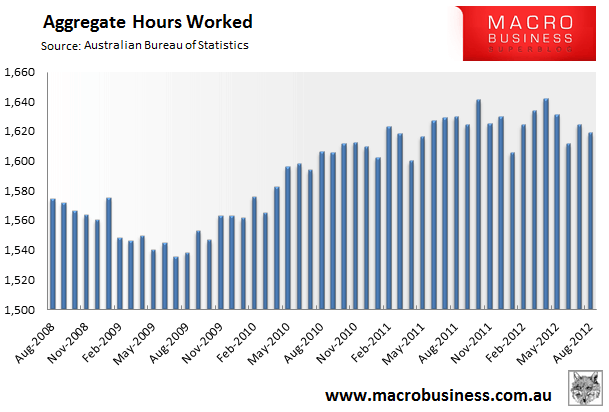
On a positive note, the underemployment rate fell slightly in the August quarter, down -0.2% to 12.4%, with falls in Western Australia and New South Wales partly offset by rises in the other mainland states (see below chart).
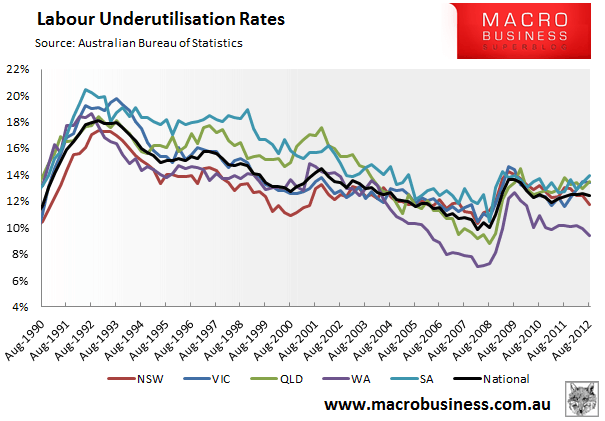
Despite the fall in the headline unemployment rate, this is a mediocre report with the economy shedding jobs and the aggregate number of hours worked declining, in addition to the lion’s share of jobs growth confined to just one state – Western Australia – where iron ore prices are now falling heavily.
Twitter: Leith van Onselen. Leith is the Chief Economist of Macro Investor, Australia’s independent investment newsletter covering trades, stocks, property and yield. Click for a free 21 day trial.

